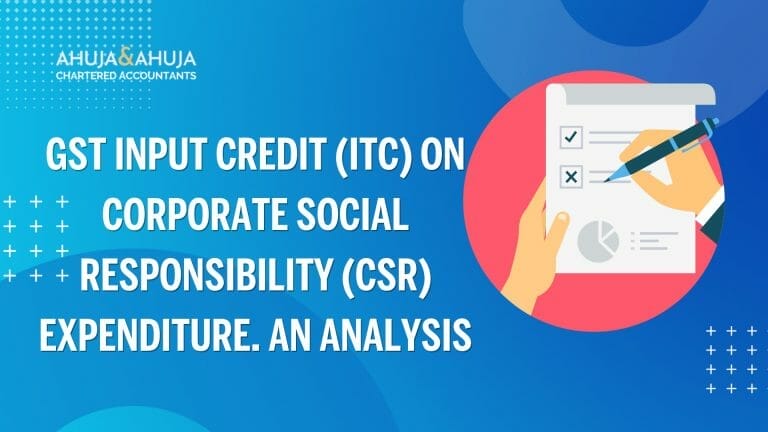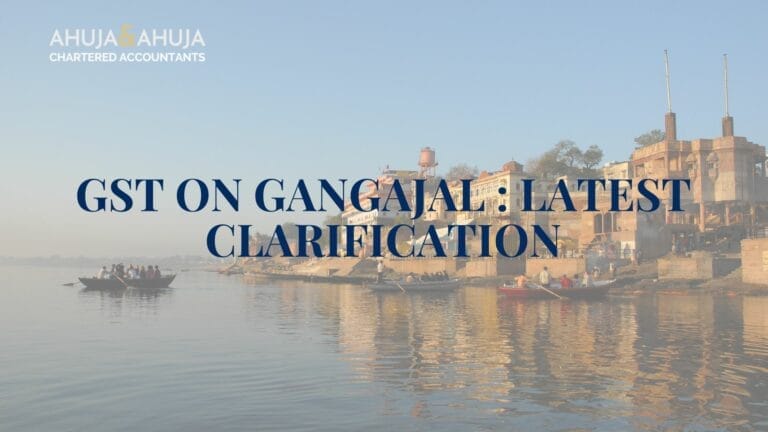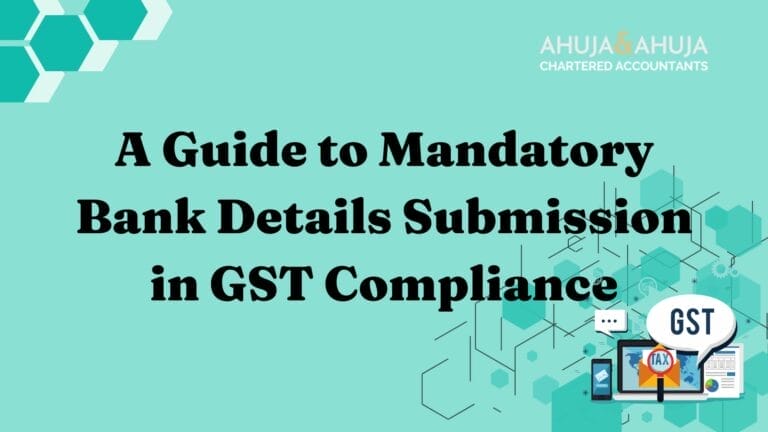Understanding GST Section 15: Value of Taxable Supply
The Goods and Services Tax (GST), implemented in India on July 1, 2017, was a revolutionary change in the tax structure, intending to streamline and simplify the process of tax collection and compliance, enhancing transparency in the business environment.
The system integrates various indirect taxes under one umbrella, profoundly impacting how businesses operate and comply with tax regulations.
Among the critical elements of GST, understanding the valuation of taxable supply—governed under Section 15 of the GST Act—is essential for accurate tax compliance and calculation.
Section 15 Explained: What Defines the Transaction Value?
Section 15 of the CGST (Central Goods and Services Tax) Act 2017 is pivotal, as it establishes how to determine the value of supply on which GST is calculated.
According to this section, the ‘transaction value’ is the price actually paid or payable for the said supply of goods or services or both.
However, this is valid only when the supplier and the recipient are not related, and the price is indeed the sole consideration, excluding any other ancillary factors.
Understanding the transaction value is crucial because it forms the basis on which GST is levied. It affects various operational facets from GST registration to GST return filing, impacting a business’s financial structure and statutory adherence.
Decoding the Components of Transaction Value
The value of a taxable supply includes several components, not merely the sticker price of the goods or services. For a thorough compliance, one should consider the following inclusions:
Taxes, Duties, Cesses: Any levies like taxes, duties, or cesses other than the GST itself, charged under different laws, form part of the transaction value if they are charged separately by the supplier.
Incidental Expenses: These might include costs such as packing, commission, or other expenses charged by the supplier to the recipient before or at the time of the supply of goods or services.
Interest or Late Fees: If there are interests, late fees, or penalties due to delayed payment of the supply, these are also added to the transaction value.
It’s important to note that any subsidies linked directly to the price (except those provided by the Central and State governments) are included in this transaction value. Understanding exemptions and deductions under the GST framework is also vital to ensure compliance and optimal financial management.Discounts: Any discount that is recorded in the invoice and linked to the specific sale can reduce the transaction value. However, post-supply discounts that are predetermined in the terms of the sale and documented can also decrease the transaction value provided the recipient reverses the corresponding input tax credit.
Importance of Accurate Determination of Transaction Value
The accurate determination of the transaction value under Section 15 is not just a regulatory formality but a foundational aspect of GST compliance.
Errors or oversights in this calculation can lead to incorrect GST filings, which may result in penalties or even impact the financial credibility of a business.
Companies must keep abreast of the rules and methodologies to assess the correct transaction value, often seeking professional GST services for guidance, particularly when complex transactions are involved.
Special Considerations Under Section 15
When calculating the transaction value for GST purposes under Section 15, certain special considerations must be taken into account to ensure full compliance and accuracy:
Treatment of Discounts
Discounts can often be tricky as their treatment under GST depends on their timing and documentation:
- Discounts given before or at the time of supply: These are often reflected directly in the invoice and reduce the transaction value, provided they are agreed upon in the contract before the supply takes place.
- Post-supply discounts: These can also reduce the transaction value if they are stipulated in the contract of sale before the supply occurs and are linked to specific invoices.
Additionally, it’s requisite that the recipient reverses any input tax credit attributed to the discount received.
Understanding these nuances is crucial for businesses as mismanagement or incorrect documentation of discounts can lead to disputes or reassessments by tax authorities.
Connection with Subsidies
Except for subsidies provided directly by the Government, all other subsidies that are linked to the price of the goods or services need to be included in the transaction value.
This inclusion directly impacts the GST payable and highlights the complexity in determining the correct transaction value, which underscores the necessity of comprehensive GST services.
Understanding Related GST Rules
Beyond Section 15, several GST Rules provide deeper insights into handling specific scenarios where determining the transaction value might not be straightforward:
GST Rule 27: Non-financial Considerations
- Valuation involving non-monetary considerations: Here, the open market value of the supply or, failing that, the sum of consideration in money and any such non-monetary consideration’s fair market value. If both are unavailable, similar goods and services under comparable circumstances should be considered.
GST Rule 28: Transactions Between Related Parties
- For supplies between related persons or through an agent: The transaction value is the open market value of the goods and services. If the open market value is not available, the value of goods and services of like kind and quality is considered.
Further complexity arises if these are not determinable, where rules provide methodologies like cost plus method (Rule 30) or the residual method (Rule 31).
GST Rule 29: Supply Between Agent and Principal
- Specific considerations for transactions between an agent and a principal: If open market value or the price of goods and services of similar kind and quality (90% value considered from the recipient) are not ascertainable, then again, the provisions of Rule 30 or Rule 31 apply.
These rules exemplify the comprehensive approach taken by the GST framework to accommodate a wide array of transaction scenarios, ensuring a fair assessment of tax liabilities.
Common Scenarios and Examples
To better understand the application of GST Section 15 and its related rules, let’s explore some practical scenarios and examples:
Example 1: Inclusion of Incidental Expenses
- Scenario: A supplier sells goods worth INR 10,000 and charges an additional INR 500 for packaging and INR 200 for transportation, both of which are mentioned on the invoice.
- Application: Under Section 15, both packaging and transportation charges must be included in the transaction value. The total transaction value on which GST will be calculated is INR 10,700.
Example 2: Handling Discounts
- Scenario: A supplier offers a 5% discount on an invoice amount of INR 20,000 if the payment is made within 10 days, and the discount is mentioned in the invoice.
- Application: The discount of INR 1,000 (5% of INR 20,000) is allowable and should be deducted from the transaction value, making the value INR 19,000 for GST calculation, provided the payment is made within the discount period.
Example 3: Post-Supply Discount Based on Volume
- Scenario: If a customer purchases goods worth more than INR 1 million in a year, they receive a 2% rebate on the total annual purchases, agreed upon contractually and linked to specific invoices.
- Application: This post-supply discount can reduce the transaction value of future invoices once the purchase threshold is reached. Importantly, the recipient must adjust any input tax credits previously claimed for these invoices.
Example 4: Subsidies Affecting the Transaction Value
- Scenario: A supplier receives a subsidy of INR 5,000 directly linked to the price of goods sold for INR 15,000.
- Application: The subsidy should be considered part of the transaction value, making the total INR 20,000 subject to GST.
Frequently Asked Questions (FAQs)
What is meant by ‘related persons’ under GST?
Related persons include those who are officers or directors of each other’s businesses, legally recognized partners, employers and employees, etc. Transactions between related persons need careful examination as they impact the transaction value set under GST.
How are discounts treated under Section 15?
Discounts mentioned in the invoice and linked to pre-agreed terms can reduce the transaction value. Post-supply discounts are also considered if they are part of an agreed contractual agreement and documented accordingly.
Can subsidies affect the transaction value?
Yes, except for government subsidies, other subsidies directly linked to the price should be included in the transaction value.
What if the transaction value cannot be determined under the usual methods?
If usual methods under Section 15 do not suffice, alternative rules such as GST Rules 30 (Cost Method) and 31 (Residual Method) can be used based on cost, market value, or as a last resort, the best judgment.
Summary: Determination of Value of Transaction in GST (Section 15)
The proper determination of the transaction value under GST Section 15 is crucial for accurate tax assessment and compliance.
From including incidental charges like taxes and duties to understanding the implications of discounts and subsidies, businesses need to meticulously evaluate every component that contributes to the transaction value.
The scenarios and examples provided here illustrate the practical application of these rules, aiding businesses and professionals in navigating this complex terrain.
Moreover, the interplay of related GST rules—such as Rule 27 on non-financial considerations, Rule 28 on transactions between related persons, and Rules 30 and 31 offering methods for valuation when standard approaches do not suffice—demonstrates the comprehensive framework set by the GST regime to ensure fairness and transparency.
For businesses, staying informed and compliant requires not only a good understanding of these rules but also possibly seeking expert GST services for guidance, especially in intricate situations.
Whether it’s routine GST return filings, registering for GST, or addressing complex tax scenarios, the nuanced understanding of Section 15 enhances a company’s ability to manage its GST obligations efficiently, minimizing risks and bolstering compliance.
Through diligent application and thorough understanding of the GST laws, businesses can ensure they are not only compliant but also positioned to take strategic advantage of various tax benefits and efficiencies inherent in the regulatory framework.
Disclaimer
The materials provided herein are solely for educational and informational purposes. No attorney/professional-client relationship is created when you access or use the site or the materials. The information presented on this site does not constitute legal or professional advice and should not be relied upon for such purposes or used as a substitute for professional or legal advice.







